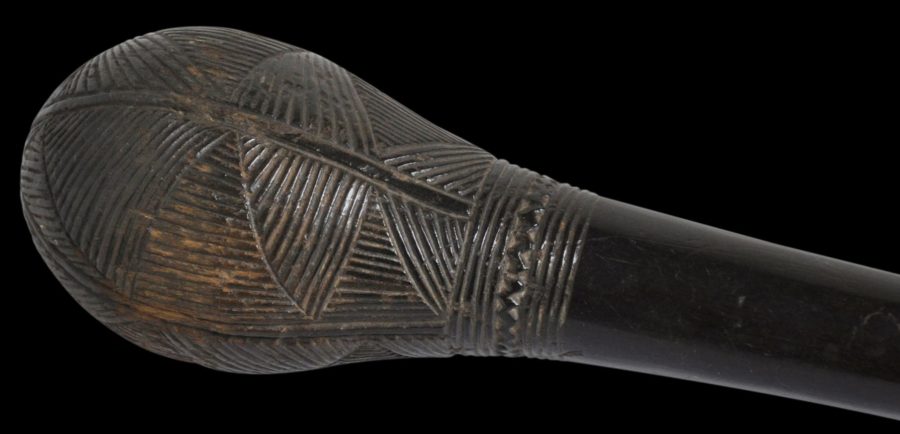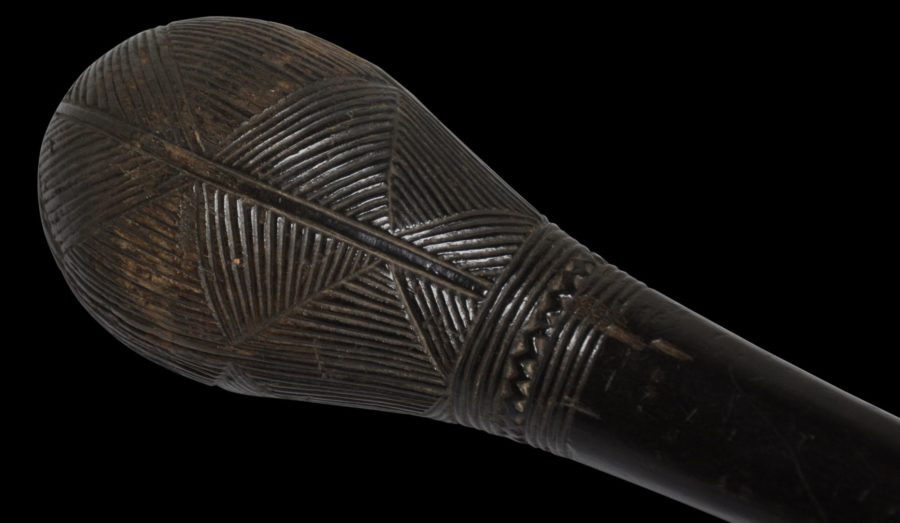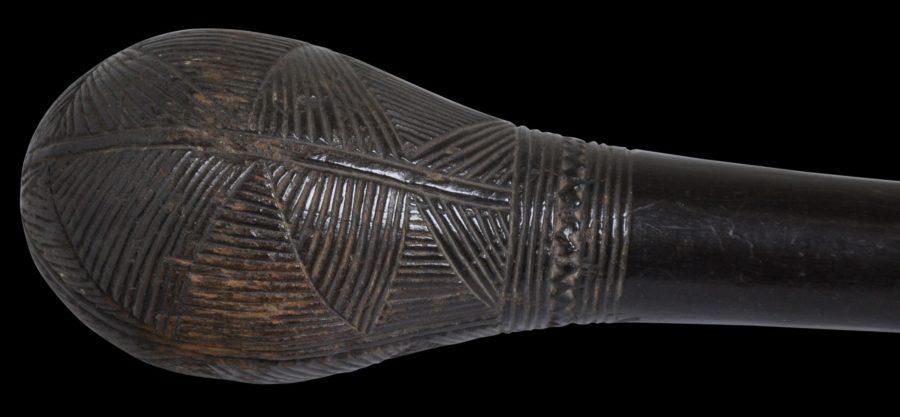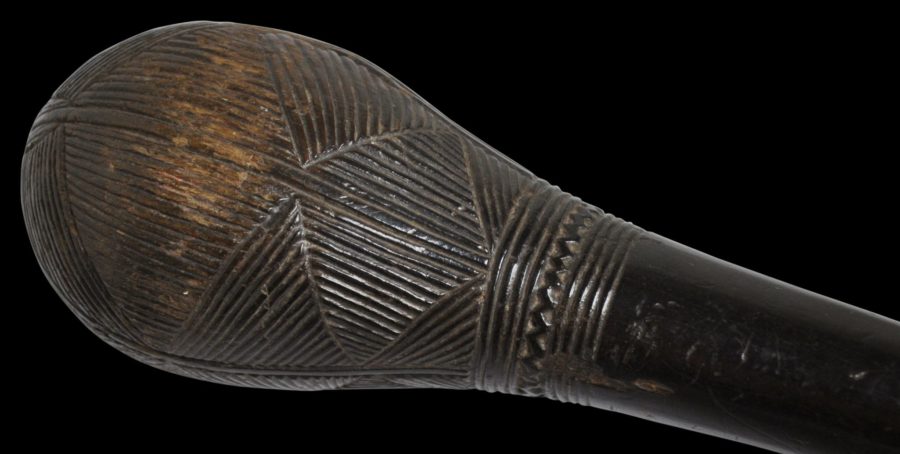Enquiry about object: 4517
Ovimbundu Carved Wooden Sceptre
Ovimbundu People, Angola 19th century
height: 54cm
Provenance
UK art market
This fine privilege sceptre has a strong, dark patina. It is carved from a single piece of heavy dark wood and has, as its finial, a finely carved, elongated oval head. The overall form is reminiscent of a safety match!
The finial head is carved with wickerwork-like geometric designs.
Sceptres such as the example here were prestigious items owned by Ovimbundu chiefs in what is now Angola. Their forms represent the positive qualities the chiefdoms would wish to cultivate within. Typically such sceptres were presented to the sons of chiefs during their transition to adulthood.
Ovimbundu carving work often shows influence from that of the Chokwe people. (The Chokwe are another of Angola’s important ethnic groups). Ovimbundu carvings were also influenced by the royal art of the neighbouring Luba kingdom in the present-day Democratic Republic of Congo.
All these influences were cultivated along trade routes that penetrated the region during the 19th century. The Ovimbundu, Chokwe, Luena and related tribal groups in the region all used related prestige sceptres.
The Ovimbundu are a Bantu-speaking ethnic group living in southern Angola, which comprises over 20 indigenous chiefdoms. The Ovimbundu were the main coastal link to the Portuguese-sponsored trade routes with Central Africa. The merchants and chiefs became wealthy through this trade and would often commission objects of art to illustrate their political and financial status. The authority of an Ovimbundu chief was not hereditary – a council elected a sovereign, but he was chosen only from among the members of the royal clan.
The example here is in very fine condition. It has obvious age and, as mentioned, a dark, glossy patina.
The sceptre comes with a fine, custom-made metal stand.
References
Bacquart, J. B., The Tribal Arts of Africa, Thames & Hudson, 1998.
Ginzberg, M., African Forms, Skira editore, 2000.
Pethica, T., Klopper, S. & Nettleton, A., The Art of Southern Africa: The Terence Pethica Collection, 5 Continents, 2007.
Robbins, W. M. and Nooter, N. I., African Art in American Collections, Smithsonian Institution, 1989.






